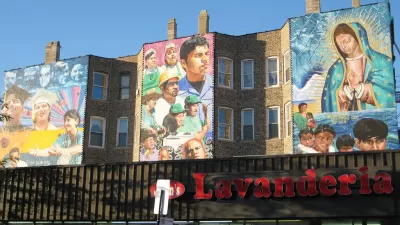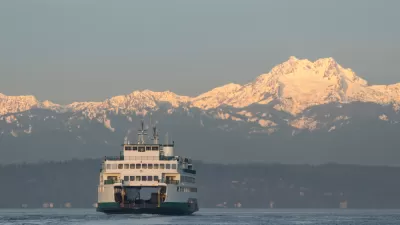It's hard to avoid tales about the country's urban boom; then the U.S. Census goes and releases data that totally backs it up.
Mike Maciag details the updated population estimates released by the U.S. Census Bureau earlier this week. The data provides support for the continuing trend of growth in cities around the country (i.e., not just Texas).
"In all, cities with populations exceeding 100,000 collectively added an estimated 857,000 residents between July 2012 and July 2013, accounting for an increase of about 1 percent. By comparison, all other areas of the country recorded population growth of only 0.6 percent over the same time period," writes Maciag. The article also includes a link to a map with a data overlay of the population growth (or loss) in cities and towns all over the map.
As for the city that grew the fastest, that distinction goes to Frisco, Texas, which "posted population gains of 6.5 percent over the short 12-month period, topping all other larger cities."
But for the country's largest cities, look to the pacific Northwest for the fastest rate of growth: "Of the nation’s largest cities, nowhere has population growth accelerated quite like Seattle. The city has seen annual population gains increase each of the past few years, climbing by 2.8 percent last year -- the highest rate of any city with at least a half million residents."
Gene Balk also provides analysis of Seattle's precipitous rise, which outpaced growth in its suburbs for the second consecutive year.
FULL STORY: New Population Estimates Highlight Nation's Fastest-Growing Cities

Study: Maui’s Plan to Convert Vacation Rentals to Long-Term Housing Could Cause Nearly $1 Billion Economic Loss
The plan would reduce visitor accommodation by 25,% resulting in 1,900 jobs lost.

North Texas Transit Leaders Tout Benefits of TOD for Growing Region
At a summit focused on transit-oriented development, policymakers discussed how North Texas’ expanded light rail system can serve as a tool for economic growth.

Why Should We Subsidize Public Transportation?
Many public transit agencies face financial stress due to rising costs, declining fare revenue, and declining subsidies. Transit advocates must provide a strong business case for increasing public transit funding.

How to Make US Trains Faster
Changes to boarding platforms and a switch to electric trains could improve U.S. passenger rail service without the added cost of high-speed rail.

Columbia’s Revitalized ‘Loop’ Is a Hub for Local Entrepreneurs
A focus on small businesses is helping a commercial corridor in Columbia, Missouri thrive.

Invasive Insect Threatens Minnesota’s Ash Forests
The Emerald Ash Borer is a rapidly spreading invasive pest threatening Minnesota’s ash trees, and homeowners are encouraged to plant diverse replacement species, avoid moving ash firewood, and monitor for signs of infestation.
Urban Design for Planners 1: Software Tools
This six-course series explores essential urban design concepts using open source software and equips planners with the tools they need to participate fully in the urban design process.
Planning for Universal Design
Learn the tools for implementing Universal Design in planning regulations.
City of Santa Clarita
Ascent Environmental
Institute for Housing and Urban Development Studies (IHS)
City of Grandview
Harvard GSD Executive Education
Toledo-Lucas County Plan Commissions
Salt Lake City
NYU Wagner Graduate School of Public Service





























